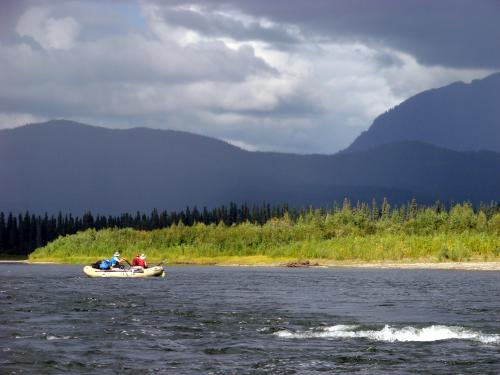
The ability to work closely and collaboratively with professionals from different backgrounds is fundamental to success in the field of watershed science. This year's Ecogeomorphology course brought graduate students together from a variety of disciplines, including ecology, engineering, fisheries, and geography.
The array of academic backgrounds allows students to work in collaborative, multidisciplinary teams on critical river and stream management questions. This year, the Ecogeomorphology course examined the most critical issue facing arctic and sub-arctic aquatic ecosystems: global climate change. By preparing background synopses prior to the field expedition, students were able to synthesize a body of knowledge regarding many aspects of arctic and sub-arctic aquatic food webs and potential changes to watershed functioning, such as productivity, permafrost, and altered hydrology. This background information was contributed to Wikipedia in an effort to facilitate the diffusion of knowledge and improve our ability to adaptively manage critical ecosystems.
During class, the students discussed several issues in detail, reviewed published literature, and prepared individual reports for publication on Wikipedia. Following this period of classroom study, the students conducted a two-week field study of the Kobuk River watershed, located above the Arctic Circle in northern Alaska. A primary focus of this study was the status of sheefish (Stenodus leucicthys, or "Tarpon of the Tundra"), a unique arctic fish species of limited distribution, and potential changes to its habitat due to climatic change. The field study included the collection of original information on aquatic and riparian ecology, hydrology and fluvial geomorphology, which are published herein. Please see the attachment below for the final report of this study.
